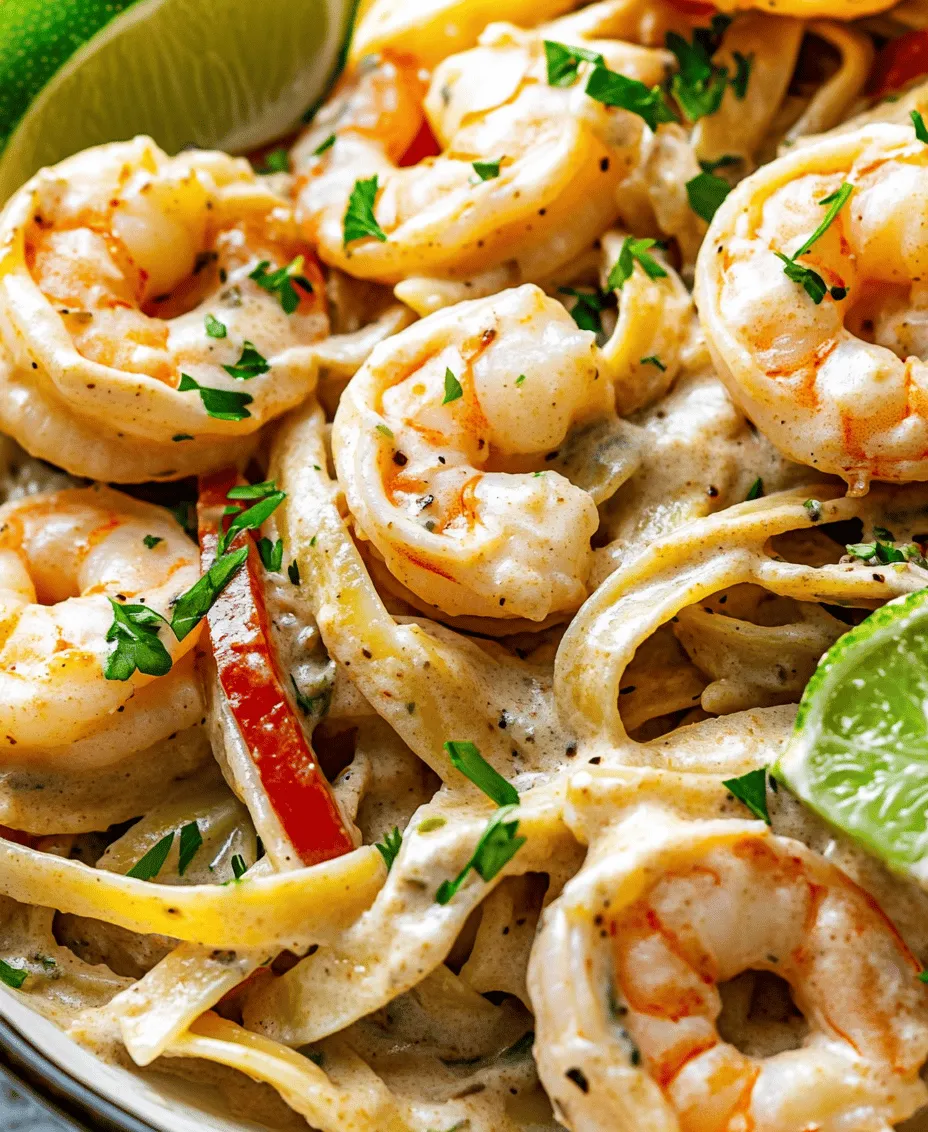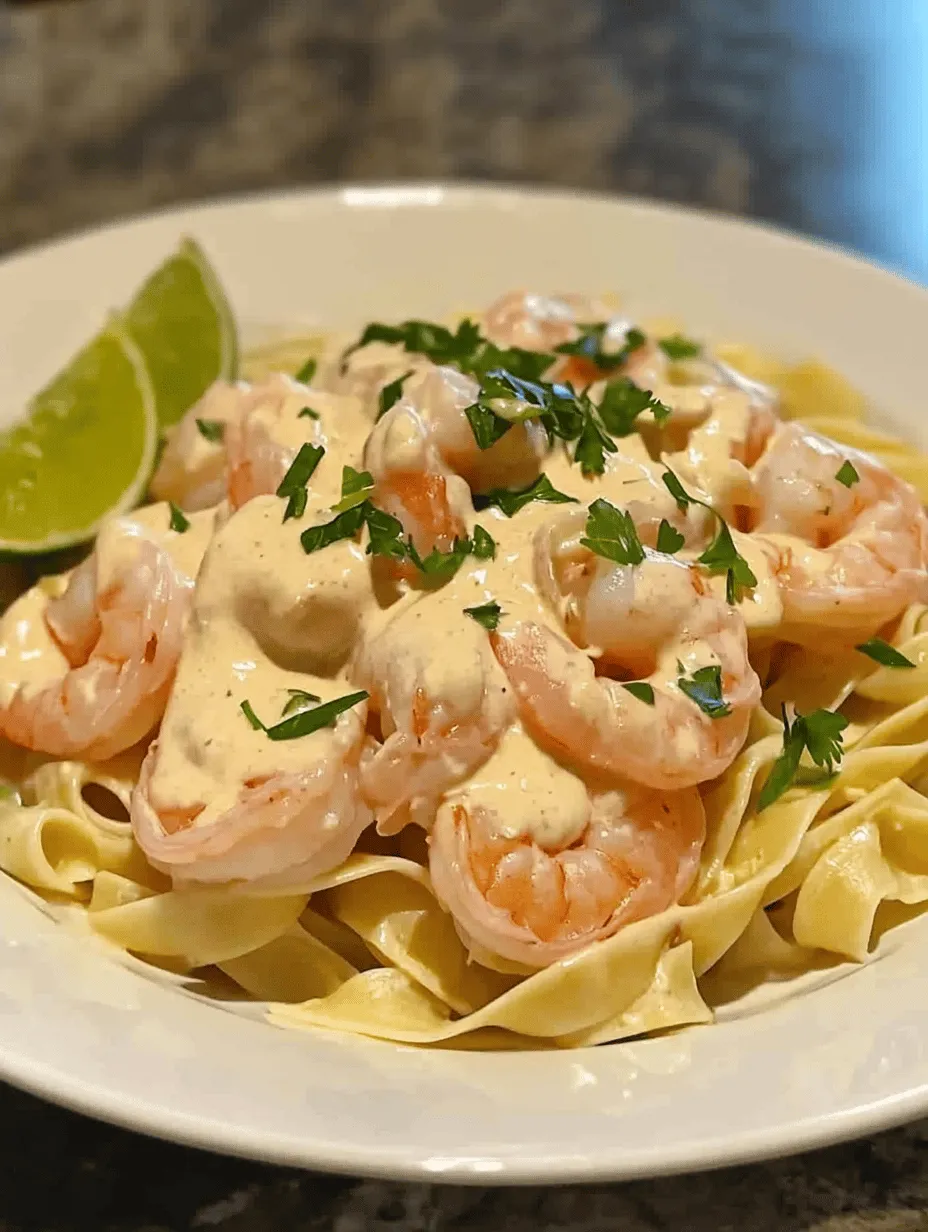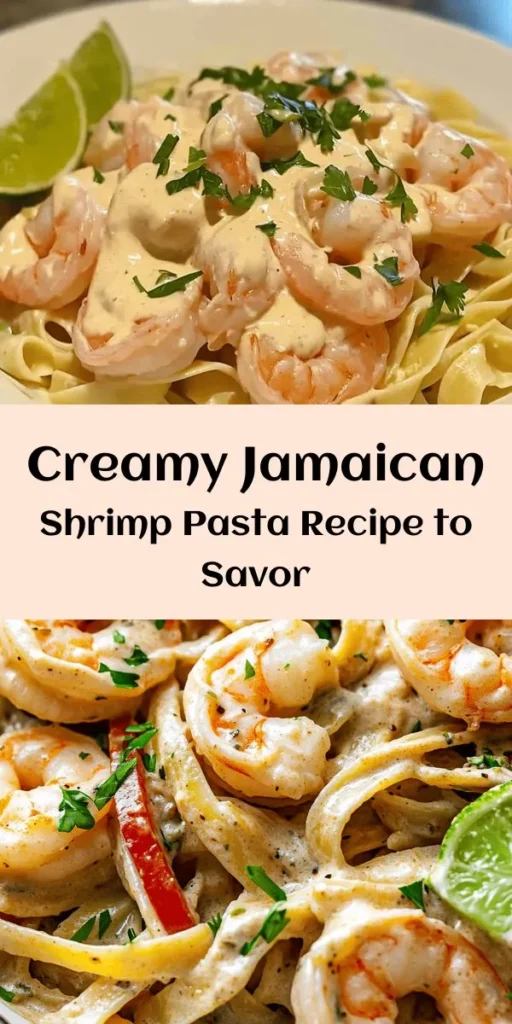Introduction
Jamaican cuisine is a vibrant tapestry of flavors, colors, and textures that embody the rich cultural heritage of the Caribbean. Known for its bold spices, fresh ingredients, and the unmistakable warmth of its tropical essence, Jamaican food has made a significant impact on culinary scenes around the world. One of the most delightful dishes that showcase this fusion of flavors is Jamaican Shrimp Pasta. This tantalizing recipe marries the Italian art of pasta-making with the robust, spicy notes of Jamaican cuisine, resulting in a dish that is both comforting and exciting.
Imagine creamy fettuccine or spaghetti tossed with succulent shrimp, infused with the fragrant spices of jerk seasoning, and enveloped in a velvety sauce made from coconut milk and heavy cream. This dish does not just satisfy hunger; it delivers a vibrant experience that transports you straight to a sun-kissed beach on the shores of Jamaica. The appeal of Jamaican Shrimp Pasta lies not only in its luxurious texture but also in its ability to bring together the best of two culinary worlds, creating a meal that is perfect for special occasions or a comforting weeknight dinner.
The Essence of Jamaican Flavors
At the heart of Jamaican cuisine is the iconic jerk seasoning, a blend of spices and herbs that defines much of the island’s culinary identity. Jerk seasoning has its roots in the indigenous Taino people and was further evolved by African slaves who brought their culinary traditions to the island. Traditionally used for marinating meats, jerk seasoning typically includes ingredients like allspice, thyme, scallions, garlic, and hot peppers, offering a symphony of flavors that range from sweet to spicy.
In the context of our Jamaican Shrimp Pasta, jerk seasoning plays a vital role. It infuses the shrimp with a depth of flavor that elevates the dish from ordinary to extraordinary. The spice profile can vary widely depending on the specific brand or recipe used, making it essential to choose a jerk seasoning that resonates with your taste preferences. For those who enjoy a good kick, opting for a spicier version can add extra excitement to the dish.
Another key component in this creamy delight is coconut milk. A staple in Caribbean cooking, coconut milk adds a luscious creaminess that complements the heat of the jerk seasoning beautifully. Its subtle sweetness balances the dish, creating a harmonious blend of flavors that is both decadent and refreshing. The use of coconut milk in Jamaican Shrimp Pasta not only enhances the texture but also reinforces the dish’s Caribbean roots, making it an integral part of the recipe.
Fresh ingredients are crucial in achieving an authentic flavor profile. The vibrant colors and textures of fresh vegetables, herbs, and seafood are what set Jamaican cooking apart. Using fresh shrimp ensures that every bite is succulent and flavorful, while aromatics like garlic, onion, and bell peppers add layers of taste that round out the dish. The freshness of these ingredients is paramount, as it enhances the overall experience and truly brings the essence of Jamaica to your table.
Ingredients Breakdown
To create this delicious Jamaican Shrimp Pasta, you’ll need a selection of high-quality ingredients that work in harmony to deliver a memorable meal. Here’s a detailed breakdown of each component:
Fettuccine or Spaghetti
The foundation of this dish is pasta, and both fettuccine and spaghetti work wonderfully. Fettuccine, with its wide ribbon-like shape, captures the creamy sauce beautifully, while spaghetti’s long, slender strands provide a delightful twirl with each forkful. When choosing your pasta, consider the type of texture you prefer and the sauce-to-pasta ratio you desire. Cooking the pasta al dente is key, as it will continue to cook slightly when combined with the sauce.
Fresh Large Shrimp
When it comes to shrimp, freshness is paramount. Look for large, wild-caught shrimp for the best flavor and texture. Fresh shrimp should have a mild ocean scent and a translucent appearance. If you’re using frozen shrimp, ensure they are properly thawed before cooking. To prepare the shrimp, peel and devein them, leaving the tails on for presentation if desired. The shrimp will absorb the jerk seasoning beautifully, becoming tender and flavorful as they cook.
Aromatics
No dish is complete without aromatics, and in Jamaican Shrimp Pasta, garlic, onion, and red bell pepper play pivotal roles. Garlic adds a fragrant depth, while onion brings sweetness and richness to the sauce. Red bell pepper not only adds a pop of color but also contributes a subtle crunch and sweetness that balances the spiciness of the jerk seasoning. To maximize flavor, sauté these aromatics until they are soft and fragrant, creating a flavorful base for your sauce.
Coconut Milk and Heavy Cream
A blend of coconut milk and heavy cream creates the luxurious sauce that envelops the pasta and shrimp. Coconut milk provides a unique creaminess and a hint of natural sweetness, while heavy cream adds richness and stability to the sauce. Combining these two ingredients results in a decadent sauce that clings beautifully to the pasta and enhances the overall flavor profile of the dish.
Jamaican Jerk Seasoning
Choosing the right jerk seasoning is essential for authentic flavor. There are various brands and homemade versions available, each with its distinct flavor profile. Look for a seasoning that includes traditional ingredients like allspice, thyme, and Scotch bonnet peppers for an authentic kick. If you prefer milder heat, you can adjust the amount of seasoning you use. The jerk seasoning will not only flavor the shrimp but will also add complexity to the creamy sauce, making it the star of the dish.
Fresh Parsley
Fresh parsley serves as both a garnish and a flavor enhancer in Jamaican Shrimp Pasta. Its bright, herbal notes add freshness to the dish, cutting through the richness of the sauce. Chopped parsley sprinkled on top just before serving provides a beautiful contrast to the creamy pasta and shrimp, making the dish visually appealing.
Optional Garnishes
While the dish stands well on its own, optional garnishes like lime wedges and grated Parmesan cheese can elevate your Jamaican Shrimp Pasta even further. A squeeze of fresh lime adds a zesty brightness that complements the creamy sauce and spicy jerk seasoning. On the other hand, a sprinkle of Parmesan cheese introduces a nutty flavor that pairs surprisingly well with the dish, adding an Italian twist to the Caribbean-inspired recipe.
With these ingredients at your disposal, you’re well on your way to creating a Jamaican Shrimp Pasta that delights the palate and showcases the vibrant flavors of the Caribbean. The combination of spicy jerk seasoning, creamy coconut milk, and fresh shrimp creates a dish that is as visually stunning as it is flavorful. In the next section, we will delve into the step-by-step instructions on how to prepare this culinary masterpiece, ensuring that you can recreate this delicious fusion of Jamaican and Italian cuisine in your very own kitchen.

Step-by-Step Cooking Instructions
Cooking the Pasta
To achieve the perfect texture for your Jamaican Shrimp Pasta, it’s essential to cook the pasta al dente. Al dente, which means “to the tooth” in Italian, refers to pasta that is firm to the bite yet cooked through. This texture not only enhances the eating experience but also ensures it holds up well when combined with the creamy sauce.
1. Boil Water: Start by bringing a large pot of salted water to a rolling boil. The salt is crucial as it enhances the flavor of the pasta.
2. Add the Pasta: Once the water is boiling, add your preferred pasta—linguine or fettuccine works wonderfully for this recipe. Stir occasionally to prevent sticking.
3. Cooking Time: Refer to the packaging for the recommended cooking time but aim for about 1-2 minutes less than suggested for al dente. This will allow the pasta to finish cooking in the sauce later, absorbing all those delicious flavors.
4. Drain and Rinse: Once cooked, reserve a cup of pasta water for later use, then drain the pasta in a colander. Rinsing is usually not recommended for pasta, as it washes away the starch that helps the sauce cling, but a quick rinse can be helpful if you’re worried about sticking while you prepare the sauce.
Sautéing Aromatics
Aromatic vegetables are the backbone of flavor in many dishes, and sautéing them correctly is key to extracting their full potential.
1. Heat Your Pan: In a large skillet, heat about 2 tablespoons of olive oil over medium heat. Ensure the oil is hot but not smoking.
2. Add Aromatics: Start by adding finely chopped onions and bell peppers, sautéing them until they soften, which usually takes about 3-4 minutes. Follow with minced garlic and fresh ginger, sautéing for an additional minute until fragrant.
3. Avoid Overcooking: Stir continuously to prevent burning. The goal is to soften the vegetables while retaining their bright colors and nutrients.
Preparing the Shrimp
When it comes to cooking shrimp, timing is everything. Overcooked shrimp can become rubbery and lose their delicate flavor.
1. Seasoning: Pat the shrimp dry with paper towels and season them with salt, pepper, and a pinch of paprika for added flavor.
2. Cooking the Shrimp: Add the seasoned shrimp to your sautéed aromatics. Cook for 2-3 minutes on each side, or until they turn pink and opaque. Avoid overcrowding the pan; cook in batches if necessary to ensure even cooking.
3. Removing from Heat: Once cooked, remove the shrimp from the skillet and set them aside. This step prevents them from cooking further while you prepare the sauce.
Creating the Sauce
The creamy sauce is where the magic happens, blending the flavors of the aromatics, shrimp, and the richness of coconut milk.
1. Add Coconut Milk: In the same skillet, lower the heat and add 1 can (about 13.5 oz) of full-fat coconut milk. This rich ingredient will provide the creamy base for your sauce.
2. Flavor Balancing: Stir in a tablespoon of soy sauce and a squeeze of fresh lime juice to balance the creaminess with umami and acidity. You can also add a teaspoon of jerk seasoning for a touch of authentic Jamaican flavor.
3. Thickening the Sauce: Allow the sauce to simmer for about 5-7 minutes, stirring occasionally. If the sauce appears too thick, you can add a bit of the reserved pasta water to achieve your desired consistency.
Combining Pasta and Sauce
Once your sauce is ready, it’s time to bring everything together.
1. Mixing: Add the drained pasta directly into the sauce, tossing gently to coat all strands evenly. The heat from the pasta will help it absorb the flavors of the sauce, enhancing the overall dish.
2. Reintroducing Shrimp: Finally, fold in the sautéed shrimp, ensuring they are well distributed throughout the pasta.
Final Seasoning
The finishing touches can elevate your dish from good to great.
1. Taste and Adjust: Before serving, taste the pasta and check for seasoning. Add more salt, pepper, or lime juice as needed to achieve the perfect flavor balance.
2. Garnish: For an extra touch, consider adding freshly chopped cilantro or parsley for color and freshness.
Serving Suggestions
Presentation Ideas
The way you plate your Jamaican Shrimp Pasta can greatly enhance its appeal.
1. Plating Techniques: Use a large serving bowl or individual plates. Twirl the pasta using a fork for a neat presentation, and create a small mound in the center.
2. Garnishes: Sprinkle with freshly chopped herbs (like cilantro or parsley) and a few lime wedges on the side for a pop of color.
Complementary Side Dishes
A well-rounded meal is often complemented by light, fresh side dishes.
1. Salads: A simple green salad with mixed greens, cherry tomatoes, and a light vinaigrette pairs beautifully with the richness of the pasta.
2. Bread: Serve with crusty bread or garlic bread to soak up the creamy sauce, making every bite satisfying.
Beverage Pairings
The right beverage can elevate your dining experience.
1. Wine: A chilled Sauvignon Blanc or a light Pinot Grigio pairs well with the shrimp and creamy sauce, enhancing the meal without overwhelming it.
2. Cocktails: For a tropical twist, consider a refreshing mojito or a rum punch that echoes the flavors of Jamaica.
Nutritional Information
Overview of Nutritional Benefits
This dish is not only flavorful but also packed with nutritional benefits from its key ingredients.
1. Shrimp: A great source of protein, shrimp is low in calories and provides essential nutrients such as selenium and vitamin B12.
2. Coconut Milk: Rich in healthy fats, particularly medium-chain triglycerides (MCTs), coconut milk can provide lasting energy and support heart health.
3. Vegetables: The inclusion of bell peppers and onions boosts the fiber and vitamin content, making this a balanced dish.
Balanced Meal Considerations
Jamaican Shrimp Pasta offers a balanced combination of protein, healthy fats, and carbohydrates.
1. Complete Meal: With shrimp providing lean protein, coconut milk contributing healthy fats, and pasta serving as a source of complex carbohydrates, this dish is not only delicious but also nutritious.
2. Customization: Feel free to add more vegetables, such as spinach or zucchini, to increase the fiber content and overall nutritional value.
Conclusion
Jamaican Shrimp Pasta is a delightful fusion of flavors that embodies the vibrant and rich culinary culture of Jamaica. The creamy sauce, perfectly cooked shrimp, and al dente pasta create a dish that is both comforting and exciting.
This recipe is not just about the food; it’s about the joy of cooking and sharing a meal with loved ones. Whether you are exploring Jamaican cuisine for the first time or revisiting a classic, this dish promises to deliver an unforgettable dining experience. So gather your ingredients, follow the steps, and immerse yourself in the delightful flavors of Jamaican Shrimp Pasta. Enjoy every moment of this culinary adventure, and don’t forget to share it with friends and family for a truly communal celebration of food.



